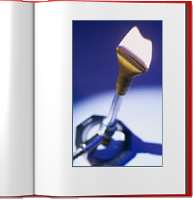Natural Gas History


First Natural Gas Pipeline in U.S. (1859)
In 1859, Colonel Edwin Drake drilled a 69-foot well in Pennsylvania that struck natural gas and oil. Later, a 5½-mile-long, 2-inch-diameter pipeline was constructed, running from the well to the town of Titusville. Many consider this first gas transportation pipeline to be the start of the natural gas industry in this country.
First Gas Burners (1885)
Ever heard of a Bunsen burner? Robert Bunsen was a German scientist who made popular a burner that mixed air with natural gas, thus allowing the natural gas flame to be regulated. This made it more convenient to use natural gas for heating buildings and cooking.
Widespread Construction of Gas Pipelines (1940s to Present)
Improvements in metals, pipe making, and welding techniques during World War II made pipeline construction more economically attractive. After the war, the nation began building its pipeline network. In the 1950s and 1960s, thousands of miles of natural gas pipeline were constructed throughout the United States. Today, this interstate pipeline system contains over one million miles of pipe—enough to stretch to the moon and back twice.



